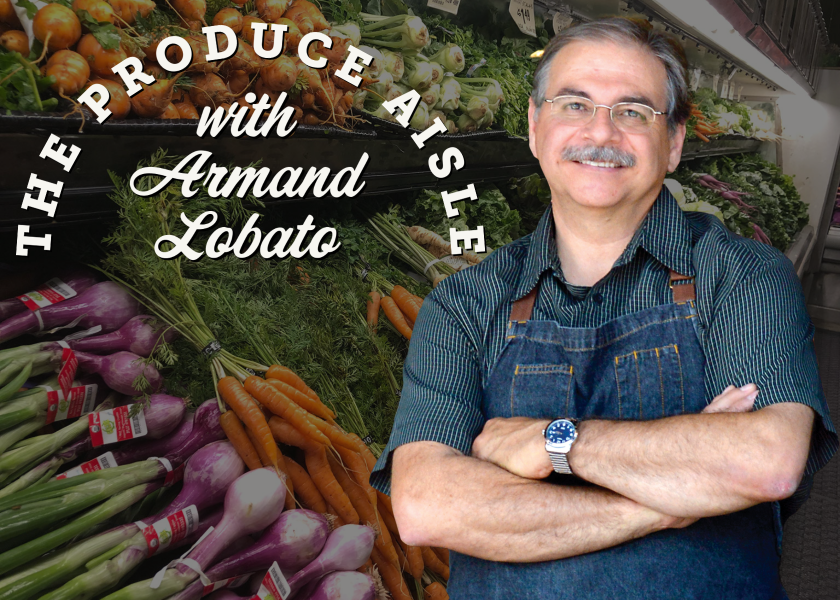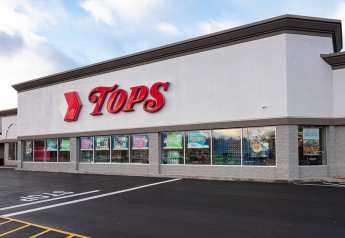The produce backroom's hidden hive of activity

The late Gene Amole was a popular Rocky Mountain News columnist. He once said, “Everybody has a place, and my place is in the newsroom.”
He was a prolific writer and described how he liked to think “through his fingers” as he typed. I can relate. On rare occasions, if anyone questioned the details in his copy, ol’ Geno was quick to follow up with some factual, supportive tidbit to suppress the challenger. Pretty good in the pre-internet era.
I dropped by The Packer offices years ago, and Chuck Robinson, an assistant copy chief at the time, happened to point something out to me. He said that considering all the topics I had opined upon in this space, he had trouble seeing up close what I wrote about whenever he went to his local grocer.
You might imagine how someone can have this perspective. If you walk into any produce department, you probably aren’t going to catch a manager busy putting the finishing touches on a prize-winning display. And you likely won’t see a huddle of clerks being briefed near one of the produce tables or witness the sign-keeper pushing their cart around as they execute biweekly price changes.
Produce tasks are like baby pigeons; you know they both exist, but only occasionally catch a glimpse.
Still, not to shirk from a challenge, I nodded understandably at what Chuck said. After all, he only pointed out his observation, as a good journalist should. Consider the hundreds of topics covered here over the past umpteen years: rotation issues, merchandising, sanitation charts, training sessions, transitioning into stone fruit season (as is happening now), meetings, load receiving, leafy green crisping, labor schedules, sick calls — the list goes on. Could all those things really be going on when you duck into your otherwise quiet, friendly neighborhood grocer?
Any produce manager worth his knife and sheath would say, “Of course.”
Related: Read more from Armand Lobato
However, hidden from the untrained eye are hundreds of hidden moving parts in a produce department. I explained that much of what goes on in the produce department occurs behind the doors that lead to the backroom — or in the walk-in cooler, in the prep area or at the receiving dock. Similar to what foodservice types call their behind-the-scenes areas, the “back of the house” is where semi-loads of produce regularly arrive in cartons, bins or bales, stacked in mixed pallets. It’s where a retail store’s fresh load is put away, prepped, stored and stocked.
All this is carefully managed and coordinated so that by the time the next delivery rolls up, much of that fresh produce has been sold and the nearly empty backroom awaits another fresh delivery.
Another perspective that few outside eyes have, is when so much of this produce activity takes place. Setup in the produce department begins hours before the store opens, and later the closing clerk will often remain long after the store closes. Some higher-volume stores schedule one or more overnight shifts to receive and break down loads while performing all the prep and trim work, even building displays, enabling the day shifts to work more efficiently. Other stores are not nearly as complex, depending on volume. Suffice to say, in all operations, a lot goes on in the unseen off-hours.
Every chain performs the same basic tasks, yet every store has its nuances. As I reflected on things that occur beyond the average customer’s vantage point, I found myself thinking that my feeble response to Chuck’s observation wasn’t so enlightening, so much as recalling what produce crews actually do, day in and day out.
It’s a ton of work. And as I “think” through my own fingers scratching this out, now years removed from the constant daily grind of the heavy lifting in produce and all that is arranged and choreographed to make it all come together, a part of me still resides in that world.
Indeed, everyone does have a place, and I suppose my place will always be — one way or another — in the produce aisle.
Armand Lobato works for the Idaho Potato Commission. His 40 years of experience in the produce business span a range of foodservice and retail positions.







